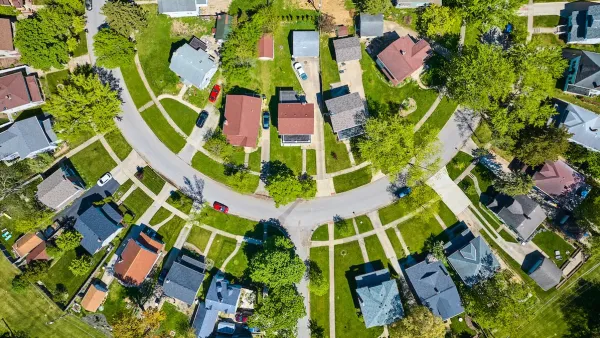In Canada, more people live in suburban high-rise apartment buildings than any other housing type. Doug Saunders looks at the country's belated recognition for its "elevator suburban" identity.
The high-rise postwar apartment buildings that Saunders calls 'slab farms' dot the fringes and suburbs of Canada's major cities. "Millions of Canadians live in these aging apartments on the outskirts, making us the world leader in non-downtown high-rise living," he says. "Forget the U.S.-generated image of suburban lawns versus downtown density: We’re a nation of peri-urban apartment dwellers."
"Yet, we pay them little attention," adds Saunders. "The apartments in the middle distance are derided by suburban homeowners and governments as too urban, too poor and too transient; downtown dwellers don’t consider them part of their world, although it’s the people in these buildings who come downtown each day to work as cashiers and cleaners and draw on urban social services."
These “cities without cities,” which are often home to low-income immigrants, are ill-suited to the needs of these residents as they lack "the public-transportation links, retail and educational clusters, entrepreneurial opportunities or middle-class housing opportunities that make for successful urban life."
Saunders describes several initiatives aiming to transform the ubiquitous slab farms into thriving urban-style neighborhoods. "With a few simple changes," he argues, "we could restore them to the centre of Canadian life."
FULL STORY: We're a nation of suburban apartment-dwellers, but afraid to admit it

Planetizen Federal Action Tracker
A weekly monitor of how Trump’s orders and actions are impacting planners and planning in America.

Maui's Vacation Rental Debate Turns Ugly
Verbal attacks, misinformation campaigns and fistfights plague a high-stakes debate to convert thousands of vacation rentals into long-term housing.

San Francisco Suspends Traffic Calming Amidst Record Deaths
Citing “a challenging fiscal landscape,” the city will cease the program on the heels of 42 traffic deaths, including 24 pedestrians.

Defunct Pittsburgh Power Plant to Become Residential Tower
A decommissioned steam heat plant will be redeveloped into almost 100 affordable housing units.

Trump Prompts Restructuring of Transportation Research Board in “Unprecedented Overreach”
The TRB has eliminated more than half of its committees including those focused on climate, equity, and cities.

Amtrak Rolls Out New Orleans to Alabama “Mardi Gras” Train
The new service will operate morning and evening departures between Mobile and New Orleans.
Urban Design for Planners 1: Software Tools
This six-course series explores essential urban design concepts using open source software and equips planners with the tools they need to participate fully in the urban design process.
Planning for Universal Design
Learn the tools for implementing Universal Design in planning regulations.
Heyer Gruel & Associates PA
JM Goldson LLC
Custer County Colorado
City of Camden Redevelopment Agency
City of Astoria
Transportation Research & Education Center (TREC) at Portland State University
Jefferson Parish Government
Camden Redevelopment Agency
City of Claremont





























